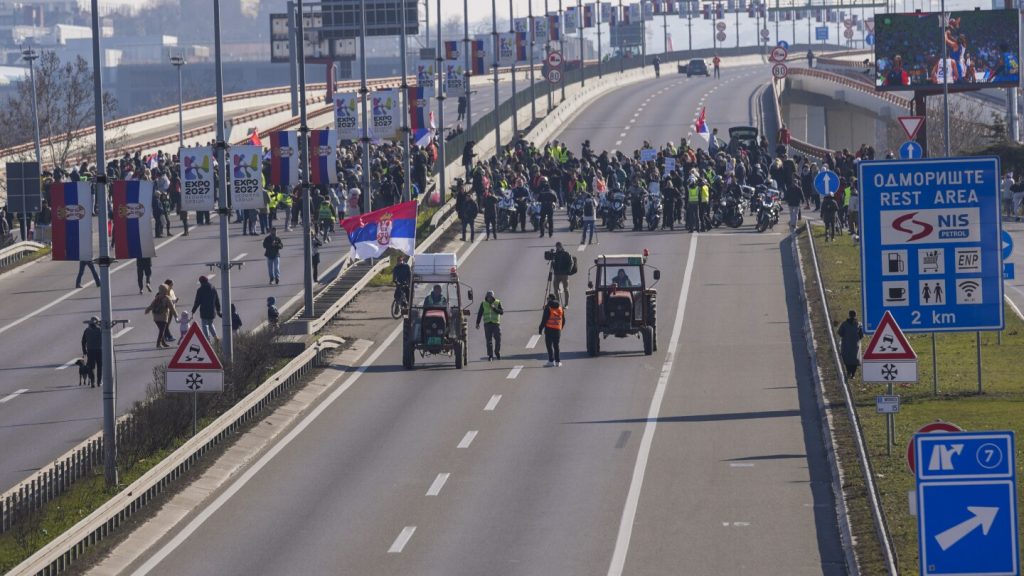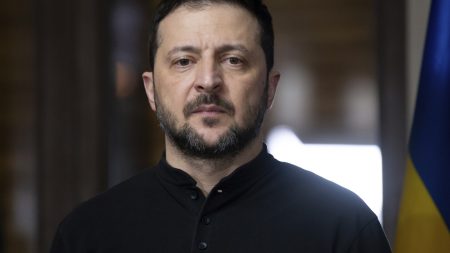A Nation in Mourning: Serbia’s 100-Day Protest for Justice
Serbia is in the grips of a national uprising as students and citizens alike continue to protest against government corruption and demand accountability for a tragic incident that shook the country. On November 1, a concrete canopy at a train station in Novi Sad collapsed, claiming the lives of 15 people. The disaster has become a rallying cry for anti-corruption protests, which have now reached their 100th day. On Sunday, university students led a series of blockades across the country, including the Gazela Bridge in Belgrade, a key transportation artery over the Sava River. Thousands of residents joined the students in a 7-hour blockade, while similar protests erupted in Novi Sad and Nis. The protesters’ message was clear: "In 100 days, no one is accountable." Themass demonstrations have grown into a nationwide movement, symbolizing a broader pro-democracy struggle against the authoritarian government of President Aleksandar Vucic.
A Symbol of Resistance: The Gazela Bridge and Beyond
The Gazela Bridge, a strategic and symbolic location, was transformed into a powerful stage for dissent. Protesters arrived carrying red banners emblazoned with the names of the 15 victims, later casting 15 white roses into the Sava River. The roses, painted red, symbolized the "blood on the hands" of the populist government. The emotional act of remembrance was paired with a determination for change. "There is hope," said Ivan Plecic, a protester. "A new movement is awakening, a new strength and energy can be seen in people. I hope they will manage to push through to the end everything they planned." The blockades were not limited to Belgrade. In Novi Sad, a three-hour road blockade brought the city to a standstill, while students in Nis targeted a highway toll station. These actions underscore the widespread frustration with the government’s lack of accountability and its alleged role in the tragedy.
The Collapse of Trust: Corruption and the Fight for Democracy
The collapse of the canopy has been blamed on government corruption tied to a lucrative infrastructure project involving Chinese state companies. Critics argue that negligence and graft led to the disaster, which has become a flashpoint in Serbia’s struggle for democracy. Tens of thousands of people have joined daily rallies and blockades, united by a shared demand for justice and transparent governance. The student-led movement has already achieved a significant victory, forcing the resignation of Prime Minister Milos Vucevic, a close ally of President Vucic. However, the protests are far from over. They have evolved into a national uprising against Vucic’s authoritarian rule, which has been characterized by tight control over state institutions and the media.
The Government’s Response: Propaganda and Division
President Vucic has dismissed the protests as a "colored revolution" orchestrated by foreign intelligence services to topple his government. He has launched a propaganda campaign, traveling across Serbia to rally his supporters and paint the protesters as enemies of the state. On Saturday, an incident involving a blown tire on Vucic’s motorcade was quickly framed by pro-government tabloids as an assassination attempt, further polarizing the nation. Since coming to power over a decade ago, Vucic and his right-wing Serbian Progressive Party have consolidated control over state-run institutions and mainstream media, silencing dissent and labeling any opposition as a foreign-led conspiracy.
The Students’ Movement: A Beacon of Hope
Despite the government’s efforts to suppress dissent, the student-led protests have become a beacon of hope for many Serbians. A group of students has embarked on a symbolic run from Kragujevac to Belgrade, distributing invitations to a major rally scheduled for February 15, Serbia’s national statehood holiday. The event will coincide with a counter-rally planned by Vucic in Novi Sad, setting the stage for a potential showdown. The students’ initiative reflects the creative and determined spirit of the movement, which has struck a chord in a country where many citizens feel state institutions serve the interests of the powerful rather than the public.
The Larger Struggle: A Nation’s Cry for Change
The protests in Serbia are more than a response to a tragic accident; they represent a deeper cry for systemic change in a country plagued by corruption. The canopy collapse has exposed the rot of government misconduct and the failure of state institutions to protect citizens. As the movement gains momentum, it has inspired hope that Serbians can reclaim their democracy and demand accountability from those in power. The coming weeks will be pivotal, with the February 15 rallies marking a potential turning point in the struggle between the authoritarian government and the pro-democracy movement. For many, the protests are not just about justice for the victims of the Novi Sad tragedy but about building a future where such tragedies are never allowed to happen again.












